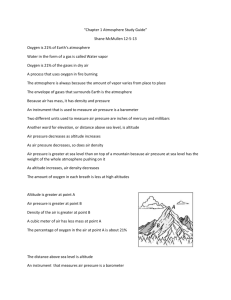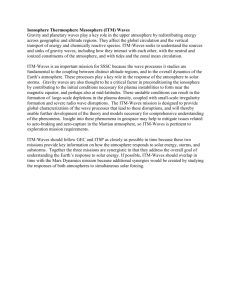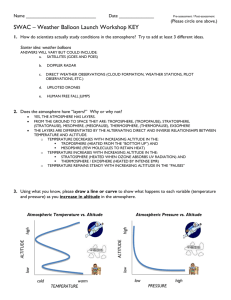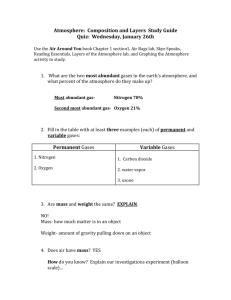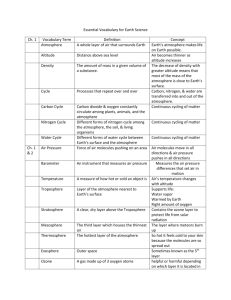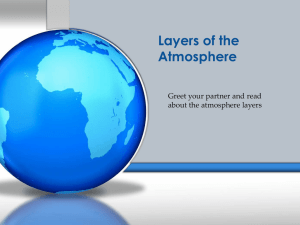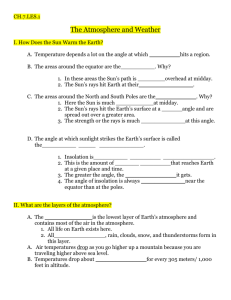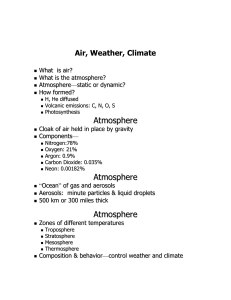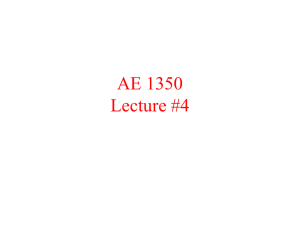Chapter 16, Atmosphere Composition, Structure & Temperature
advertisement
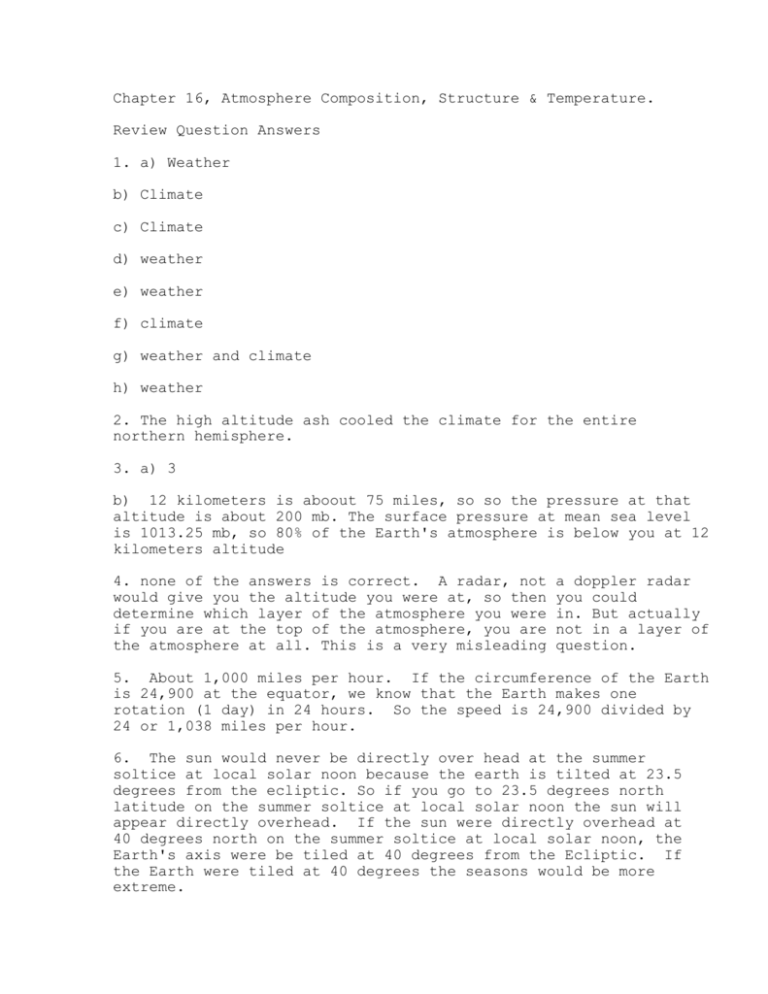
Chapter 16, Atmosphere Composition, Structure & Temperature. Review Question Answers 1. a) Weather b) Climate c) Climate d) weather e) weather f) climate g) weather and climate h) weather 2. The high altitude ash cooled the climate for the entire northern hemisphere. 3. a) 3 b) 12 kilometers is aboout 75 miles, so so the pressure at that altitude is about 200 mb. The surface pressure at mean sea level is 1013.25 mb, so 80% of the Earth's atmosphere is below you at 12 kilometers altitude 4. none of the answers is correct. A radar, not would give you the altitude you were at, so then determine which layer of the atmosphere you were if you are at the top of the atmosphere, you are the atmosphere at all. This is a very misleading a doppler radar you could in. But actually not in a layer of question. 5. About 1,000 miles per hour. If the circumference of the Earth is 24,900 at the equator, we know that the Earth makes one rotation (1 day) in 24 hours. So the speed is 24,900 divided by 24 or 1,038 miles per hour. 6. The sun would never be directly over head at the summer soltice at local solar noon because the earth is tilted at 23.5 degrees from the ecliptic. So if you go to 23.5 degrees north latitude on the summer soltice at local solar noon the sun will appear directly overhead. If the sun were directly overhead at 40 degrees north on the summer soltice at local solar noon, the Earth's axis were be tiled at 40 degrees from the Ecliptic. If the Earth were tiled at 40 degrees the seasons would be more extreme. 7. The angle of the sun shining on the north pole during the northern hemisphere summer is such that the Sun appears near the horizon all of the time. This causes a veryt small amount of en energy to be absorbed at the surface near the north pole. 8.The peak radiation emitted by a rock at room temperature is at the longest wavelength. The light bulb would be at the shortest wavelength and the car engine would be between those two wavelengths. 9. If the Earth albedo were to increase to 50% the Earth would be much cooler. 10. San Francisco climate is affected by the cool California ocean current off shore. The climate in the middle of a continent is both colder in the winter and hotter during the summer. 11. Clear skies during the day and clear skies at night would produce the largest temperature range because during the day the sun's energy reaches the ground without be reduced a great deal and at night the infrared radiation emitted by the ground is able to escape to space at the greatest rate possible. 12. The chapter opening photo is a tropical island. Since it is tropical it is at fairly close to the equator (plus or minus 30 degrees). Since it is tropical it isn't at high altitude, but is near sea level. At this altitude and latitude, there will be substantial warming during the day which will cause clouds to build up over the island and shower to occur frequently on many afternoons.
